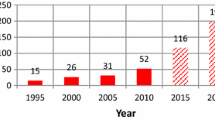Abstract
A probabilistic method to evaluate the bending strength of maritime pine beams (Pinus pinaster Aiton) was explored. The beams were subjected to an experimental campaign that started by allocating them to a visual strength grade and segmenting them lengthwise into clear wood and weak zones. The weak zones are associated with a reduced bending strength that is caused by the presence of knots or grain deviation. Non-and semi-destructive techniques were used to gather information regarding the physical and mechanical properties of the clear wood. Bending tests were carried out until failure to determine the strength of the beams. The method to predict the structural behaviour of the elements was developed under a probabilistic framework based on Monte Carlo simulations in which the reference properties of the beams were assigned randomly based on their probability distributions. The results show that the characteristic strength values assigned to the timber pieces after strength grading only frequently underestimate their strength and that the probabilistic method applied could be used to safely explore the capacity reserve of the timber elements.








Similar content being viewed by others
References
Kretschmann D (2014) Estimation of design values for in-service wood. In: White RH, Ross RJ (eds) Wood and timber condition assessment manual. General technical report FPL-GTR-234, 2nd ed. U.S. Department of Agriculture, Forest Service, Forest Products Laboratory, Madison, pp 45–76
EN 1995-1-1 (2008) Eurocode 5: design of timber structures—part 1-1: General—common rules and rules for buildings. Brussels
Cruz H, Yeomans D, Tsakanika E et al (2015) Guidelines for on-site assessment of historic timber structures. Int J Archit Herit 9:277–289. https://doi.org/10.1080/15583058.2013.774070
EN 338:2009 (2010) Structural timber strength classes. European Committee for Standardization, Brussels
Williams JR (2009) Non-destructive assessment of timber in historic buildings. Constr Mater 162:175–180
Riberholt H, Madsen PH, ABK, et al (1979) Strength distribution of timber structures: measured variation of the cross-sectional strength of structural lumber. ABK. Report no 114, Technical University of Denmark
Machado J, Lourenço P, Palma P (2012) Assessment of the structural properties of timber members in situ—a probabilistic approach. Portuguese J Struct Eng Ser II 11:1–12. http://hdl.handle.net/1822/21471
Grazide C, Coureau JL, Cointe A, Morel S (2018) Mechanical performance curves for the strength grading of maritime pine. Eur J Wood Wood Prod 76:877–888. https://doi.org/10.1007/s00107-017-1241-4
Baño V, Arriaga F, Soilán A, Guaita M (2011) Prediction of bending load capacity of timber beams using a finite element method simulation of knots and grain deviation. Biosyst Eng 109:241–249. https://doi.org/10.1016/J.BIOSYSTEMSENG.2011.05.008
Guindos P, Guaita M (2014) The analytical influence of all types of knots on bending. Wood Sci Technol 48:533–552. https://doi.org/10.1007/s00226-014-0621-8
EN 408:2010+A1 (2012) Timber structures. Structural timber and glued laminated timber. Determination of some physical and mechanical properties, Brussels
NP 4305 (1995) Madeira serrada de pinheiro bravo para estruturas. Classificação visual. Instituto Português da Qualidade, Almada
EN 1912:2012/AC (2013) Structural timber—strength classes—assignment of visual grades and species, Brussels
Hanhijarvi A, Ranta-Maunus A, Turk G (2005) Potential of strength grading of failure of timber with combined measurement techniques. Report of the Combigrade-project. VTT Publications 568, Espoo
Anthony RW, Dugan KD, Anthony DJ (2009) A grading protocol for structural lumber and timber in historic structures. APT Bull J Preserv Technol 40:3–9
UNI 11119 (2004) Cultural heritage, wooden artefacts. Load-bearing structures—on-site inspections for the diagnosis of timber members. Italian Organization for Standardization (UNI), Milan
Machado JS, Palma P (2011) Non-destructive evaluation of the bending behaviour of in-service pine timber structural elements. Mater Struct 44:901–910
Machado JS, Palma P, Simões S (2009) Ultrasonic indirect method for evaluating clear wood strength and stiffness. In: Abraham O, Dérobert X (eds) Proceedings of the 7th international symposium on non-destructive testing in civil engineering—NDTCE‘09, pp 969–974
EN 14081-2:2010+A1:2012 Timber structures. Strength graded structural timber with rectangular cross-section. Part 2—Machine grading. Additional requirements for initial type testing. European Committee for Standardization, Brussels
EN 384 (2016) Structural timber—determination of characteristic values of mechanical properties and density. Brussels 22
EN 13183-1 (2002) Moisture content of a piece of sawn timber. Determination by oven dry method. European Committee for Standardization, Brussels
ISO 13061-2 (2014) Physical and mechanical properties of wood—test methods for small clear wood specimens—Part 2: determination of density for physical and mechanical tests. International Organization for Standardization, Geneva. https://www.jcss.byg.dtu.dk/Publications/Probabilistic_Model_Code
JCSS (2006) Probabilistic model code. Part 3: Resistance model, 3.5. Properties of timber. http://www.jcss.byg.dtu.dk/-/media/Subsites/jcss/english/publications/probabilistic_model_code/timber.ashx?la=da&hash=2E643C83A75CF6326C821F7A53BD74666030911D
CSI Application Programming Interface| Computers and Structures, Inc. https://www.csiamerica.com/application-programming-interface
Cruz H, Machado JS (1990) Characteristic strength values of European grades of timber in relation to Eurocode 5. CEC R&D project. Laboratório Nacional de Engenharia Civil, Lisboa
Ross RJ, USDA Forest Service, FPL (2010) Wood handbook: wood as an engineering material. https://doi.org/10.2737/FPL-GTR-190
Morgado TFM, Dias AMPG, Machado JS, Negrão JH (2012) SIMPOLE—simulation of wood poles mechanical behaviour. BioResources 7:3439–3451
American Society for Testing and Materials (ASTM D 245) (2006) Standard practice for establishing structural grades and related allowable properties for visually graded lumber. Current 5:16. https://doi.org/10.1520/D0245-06R11.2
Acknowledgements
The authors acknowledge the financial support provided by the Portuguese Foundation for Science and Technology (FCT), through the research project ProTimber (PTDC/ECM-EST/1072/2014)—Probabilistic Assessment of Existing Timber Structures.
Funding
This study was funded by FCT (PTDC/ECM-EST/1072/2014).
Author information
Authors and Affiliations
Corresponding author
Ethics declarations
Conflict of interest
The authors declare that they have no conflict of interest.
Additional information
Publisher's Note
Springer Nature remains neutral with regard to jurisdictional claims in published maps and institutional affiliations.
Rights and permissions
About this article
Cite this article
Pereira, F., Machado, J.S. A probabilistic approach to the evaluation of the bending strength of timber beams with integration of data from on-site tests. Mater Struct 52, 38 (2019). https://doi.org/10.1617/s11527-019-1347-8
Received:
Accepted:
Published:
DOI: https://doi.org/10.1617/s11527-019-1347-8




